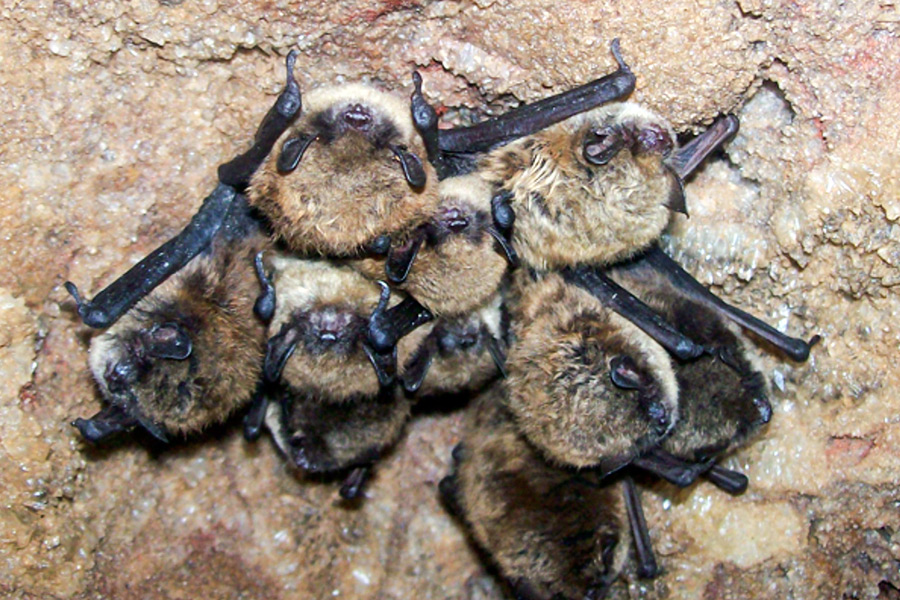Wildlife officials say they are prepared to combat a deadly disease afflicting bat populations across North America should it arrive in Montana.
Montana Fish, Wildlife and Parks is working with partner agencies and other organizations to prepare for the possible emergence of white-nose syndrome, a deadly fungal disease that has killed millions of bats across the continent in the last decade.
Washington officials announced last week that the disease was detected in a bat discovered near North Bend, Washington, marking the first time white-nose syndrome has been confirmed in the Western U.S. WNS is not known to pose a threat to humans, pets, livestock or other wildlife.
WNS is a fungus that can be spread by bats, animals or humans carrying spores on their bodies, or in the case of humans, clothing and gear. In particular, recreational cavers traveling from one cave to another can transport the fungus on their boots, ropes or clothing.
In Montana, an important partnership has developed between state agencies and the caving community decreasing the odds of humans spreading the disease here, according to FWP. In particular, the Northern Rocky Mountain Grotto has been working to educate their members and other cavers on the risks of spreading this disease and the importance of “clean caving.” Clean caving simply means adequately disinfecting gear between cave visits.
“Cavers are very committed to doing all we can to prevent any human spread of this devastating disease. We care deeply about cave resources including the bats,” stated Ian Chechet, president of the Northern Rocky Mountain Grotto.
The partnership between agencies and the caving community has also resulted in a significant increase in knowledge about Montana bats and their habitat, the agency says.
“Cavers get into places many of us wouldn’t dream of going. Their willingness to share information on what they see while in those places has resulted in some incredible new knowledge about our bats and the habitats they use,” said Lauri Hanauska-Brown, FWP’s nongame wildlife management bureau chief.
This knowledge allows wildlife and land managers to make informed decisions on bat conservation in the future and in particular in the face of this recent finding in Washington.
“We are very concerned about our bat populations in Montana, but our planning and preparation to date has put us in the best place possible to address the disease if it does make it here,” Hanauska-Brown said.
While there is no treatment for white-nose syndrome at this time, scientists are working on ways to reduce the lethality of the disease when it does strike. Managers in Montana have the necessary information to prioritize sites for preventative or recovery efforts if needed, according to FWP.
FWP officials say several agencies, including the Montana Natural Heritage Program, U.S Fish and Wildlife Service, U.S. Forest Service and Bureau of Land Management, will continue to track the spread of this disease and work with partners to ensure everyone does what they can to prevent the human spread of this disease, avoid sensitive concentrations of bats (hibernating or maternity colonies), and collect new information on our Montana bats.
Montana has 15 bat species including the little brown bat, the species found infected with WNS in Washington. Two other species of Montana bats are known to be susceptible to WNS. Bats play an important role in reducing agricultural and forest insect pests in the United States, a service valued at more than $3 billion annually. Some bats can even eat their own body weight in insects each night, including mosquitoes.
More information on bats, white-nose syndrome and decontamination protocols can be found at www.whitenosesyndrome.org.
